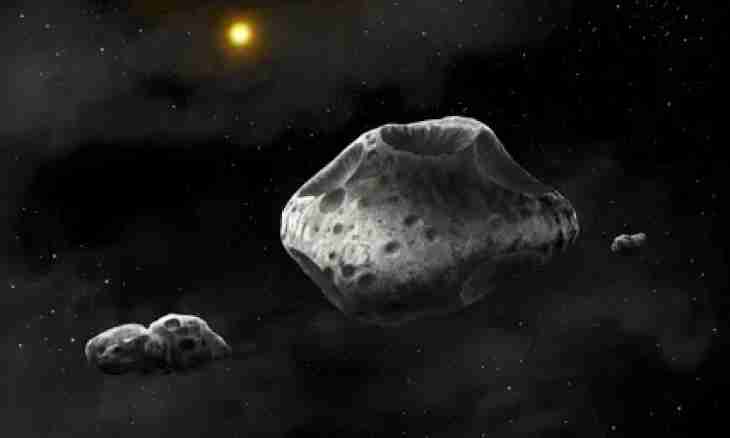Minor planets call celestial bodies of natural origin which address around the Sun. They do not show cometary activity and have the sizes more than 50 m.
Minor planets about 400 thousand, and according to forecasts and theoretical estimates their several billions are known.
Classification
As all known minor planets are various on the characteristics, the sizes, the building, arrangement in the Solar system and a form of orbits, divide them into big classes in which they are located as removal from the Sun.
Most closer to the Sun there is a belt of Vulcanoids, so call the minor planets lying in Mercury orbit. Computer calculations and the theory show that the area lying between the Sun and Mercury has stable gravitation, so, most likely, small celestial bodies exist there. Their stay in practice is complicated by proximity of the Sun, and any Vulcanoid is not investigated yet and it is not revealed.
The following group call Atonami, at these minor planets the big axis of an orbit is less than astronomical unit. On the most part of the way therefore is closer than Atona to the Sun, than to Earth, and many of them do not cross a terrestrial orbit absolutely. Trojans of Mars are called so because are collected at points of a libration of Mars. Such planets, according to the forecast, no more than 10, from them about a half is also known. Groups of Cupids and Apollonov make a belt of asteroids between orbits of Mars and Jupiter. Sometimes all minor planets are called asteroids, and in this case the belt is called as "the main belt of asteroids". Such designation was popular and was considered only as correct until were found the Kuiper belt and Centaurs. From the technical point of view this designation is incorrect as is in the Kuiper belt of a body which in all respects surpass the largest asteroid, and the number of the objects making it surpasses number of the main asteroids on several orders. The class of the minor planets which are behind a belt of asteroids is called Trojans of Jupiter or just Trojans, they are grouped at points of a libration of Jupiter. The belt of Centaurs is located between orbits of Jupiter and the Neptune. Chiron was opened for the first of Centaurs, but at rapprochement with the Sun he showed cometary activity. Despite this, off the list of Centaurs it was not struck, and it is the Centaur and a comet at the same time. Further there are the Neptune's Trojans, it is known them 6 so far, and behind an orbit of the Neptune trans-Neptunian objects are located. The most part of those forms the Kuiper belt of them which are already known. Koyperoida are divided into classical, scattered and resonant. There are trans-Neptunian objects which because of features of the movement cannot be carried to one of these three classes. The known example of it is Sedna, the orbit of this minor planet lies outside the Kuiper belt, and this still only such body of the Solar System. It is difficult to correlate to other groups because of remoteness from the Sun of Damokloida which orbits are very extended. They go to aphelions further Uranium, and in a perihelion become closer than Jupiter and Mars.
Parameters
Trojans of Mars are the most insignificant in parameters among minor planets. Eureka, the biggest of them, has 1.3 km in the diameter. 5 km follow Atona with the largest body of Kruitn. Further Sisyphus from Apollonov having the size of 8.2 km and Ganymede follows from Cupids - 39 km. Asteroids, Centaurs and Trojans of Jupiter and the Neptune have the sizes much bigger. More than one hundred from them surpass the size in 100 km. Still the big sizes at Transneptunovy objects, for example, plutino Orkus from the Kuiper belt has diameter of 1526 km. Structure of minor planets variously. Atona, Apollona, Damokloida, Centaurs and Cupids and all asteroids have irregular shape and have no internal building. Very little because of their big remoteness is known of their appearance and internal structure.

